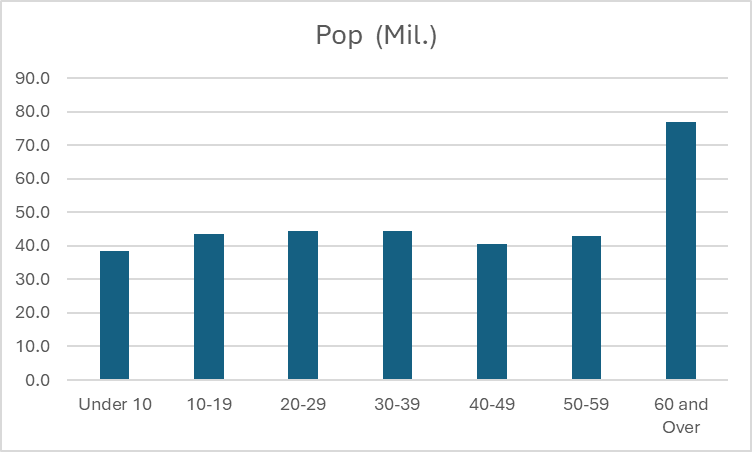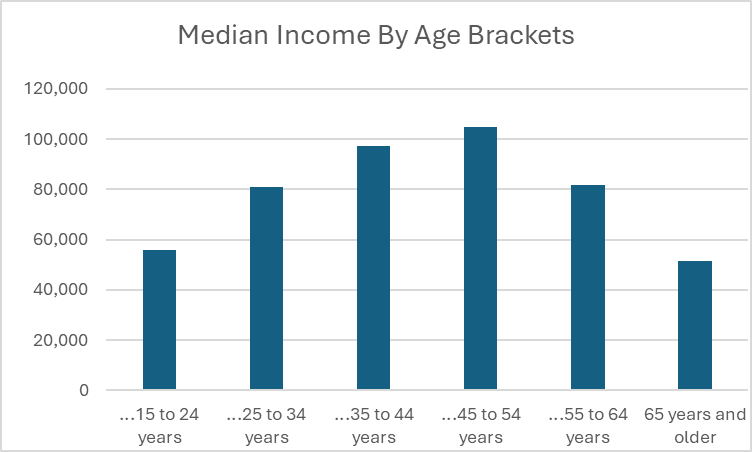Cogport First Post - Variation
- davidcogd
- Apr 10, 2024
- 6 min read
Welcome to the first episode of Cogport. Future posts will delve into subjects such as Climate Change, Artificial Intelligence, Electric Vehicles, Media Bias, and the state of the Political Parties.
You will find that I use certain Key Words and Concepts throughout my posts. This post explains how I process information and observations to provide a framework for analyzing current topics and items of interest. With focused analysis, we can find grounds for thoughtful conclusions or commentary on Cogport.
Here is the list that I work with:
· Variation
· Cognitive Thinking
· Asking Quality Questions
· Perception
· Perspective
· Reality
· Statistics and Statistical Processes.
Mix all these ingredients and they merge into the Concept of Variation.
Why is this important? Variation exists everywhere in everything. Try to think of anything that is not subject to Variation. McDonald’s makes consistent hamburgers, but no two are exactly the same.
Variation in our universe exists all the way down to the level of sub-atomic particles.
The recognition of Variation drives fact-finding, decisions, policies, and continuous improvement efforts.
First, let’s cover Perception, Perspective, and Reality.
I often hear media commentators say that “Perception is Reality.” Others nod their heads in agreement. Well, that statement is not a truism. In many cases Perception is accurate. But much of the time it is not. Perception is a human process full of Variation affected by emotions, memory, previous experience, sensory reliability, and many other factors.
A person with a Perception may believe it in their own mind, but that does not make it a Reality until proven true as fact.
If Barney Fife says he saw an alien spacecraft land down at the lake, he believes that Perception as his own “Reality.” Sheriff Andy would tell him there is probably some other explanation. So, think of me as Sheriff Andy who would Ask Quality Questions to get to the facts of the matter. Perception is not always Reality. It can be illusion or delusion.
Perspective differs from Perception because Perspective takes a broader view that considers fact, history, experience, and critical thinking to analyze a subject. The understanding of Statistical Data plays a key role. The concept of Variation is a key factor in gaining the context needed for Perspective.
Statistics and Charts
Now let’s look at examples of how Variation affects Statistics and Charts. The compilation of Statistics is based on Variation, and the results themselves are subject to questions about Variation in reliability.
If you have experience in this area, you may consider the Examples elementary, and so they are. They are just used to make points about Variation and Quality Questions.
I have always been a curious person (Curiosity did not kill the cat, so far). As I gained life experience, I realized the importance of Quality Questions – well structured and targeted to obtain a direct quality answer.
This section is presented in two parts:
1. “Basic” Statistics
2. “Slightly More Advanced” Statistics
Basic Statistics, Example 1:
Baseball Batting Average
It seems simple.
Just calculate the number of hits versus the number of at bats. For example, if a player has 30 hits after 100 at bats, the average is .300 (or 30% success rate).
This is useful for comparing different players, evaluating trends over time, and is part of the entertainment of sports.
However, Variation appears when you consider that no two hits or batting averages are the same. Here is some Variation in what occurs:
Single and Multi-base Hits
Different Stadiums
Different Pitchers
Different Baseballs
Different Weather
Different Umpires
Different Swings.
The Variation in swings by the same batter is a great example.
A player may work to have a very consistent swing (like McDonald’s with hamburgers).
But no two swings by that player are exactly the same.
The batter must adjust to the pitch location and speed, measure the strength required, and adapt many other swing factors. The batter may be having a “good” day or a “bad” day. The player might have had a fight with a spouse the night before, or other distraction.
Pete Rose had an exceptional skill for measuring all the Variations that were thrown at him as a batter. It made him the all-time leader in Total Hits. Unfortunately, a variation in his personal life got him in trouble that he still works to overcome.
Basic Statistics, Example 2:
Voter Opinion Polls.
We see them all the time in the media, and they are subject to many variations in interpretation, some good and some defective. You also will hear the Margin of Error which is fundamental to understanding the reliability of the poll. The Variation can be so large that the media will dwell on how the polls could have been so wrong when the actual vote occurs.
Basic Statistics, Example 3:
Earth’s Spin.
Recent reports say that scientists are following new developments about the speed of the Earth’s rotation. We know that one rotation is 24 Hours, one day. However, it is not exactly 24 hours to the fraction of a second. It has Variation over time.
The Earth’s spin had been slowing down for many years. Since 1972, the Earth slowed by about ½ second per year, and Atomic Clocks have been adjusted ahead by a total of 27 seconds since then – what are called “leap-seconds.” Until recently.
That has suddenly changed with the Earth now spinning faster. A “backward-second” will have to be taken off the clocks. This is problematic for many systems that are not programmed for such a thing. There are different theories on why the spin change. They vary from Climate Change and Ice Melt, the Moon and Tides, and Changes in Flow of the Earth’s Molten Core.
Why care? The co-ordination of Atomic Clocks and Astronomical Clocks is important for many sciences/calculations and endeavors that depend on exact time measurement. It is amazing how precise these processes are. They are butting heads with Variation.
This is another example of how Variation exists in everything. Maybe one of you Readers can come up with something that is always exact. I can’t think of one.
Slightly Advanced Statistics, Example 1:
US Population by Age Bracket.
The Bar Chart (Histogram) below shows the distribution of population in 10 year Age Brackets.
The total population in the US according to the 2020 Census was 331.5 Million.
Source: census.org
This chart shows a fairly level distribution until you get to Age 60 and over.
Two things stand out:
1. The boom in Baby Boomers still exists.
2. Recent Birth Rates Have Declined.
Note: The number of living Baby Boomers (born from 1946 to 1964) was estimated as 73 Million in the 2020 Census, or 22% of the total population.
What can Society do with this information:
Allocate Resources
Budget Infrastructure
Plan Social Services & Social Security
Make Policy
Understand the influence of different generations on society.
Slightly Advanced Statistics, Example 2:
Income By Age Bracket.
This chart shows a distribution of Personal Income that peaks in the Bracket Age 45 to 54 Years. Not unexpected.
If you draw a curved line from top to top of each bar you get a shape that starts to resemble a bell.
You will see a more complete bell curve in the next Example.
What’s the Variation? Incomes have Variation by individual, age, race, origin, and state. The US Census is an excellent source for this data. (www.census.org)
Slightly Advanced Statistics, Example 3:
IQ Distribution in the US.
This chart shows the range of IQ in the US Population, using the Weschler Scale. The percentages at the bottom represent the share of total population that scores in a given range of IQ.
For example, 68% of the population scores between an IQ of 85 and 115.
In the Weschler Scale, a Score of 100 is the Median IQ (the highest point on the chart). By definition, half the population scores above that point, and half below.
Weschler Scale
Description of IQ Ranges: IQ Range | Classification |
130 and above | Very superior |
120–129 | Superior |
110–119 | High average |
90–109 | Average |
80–89 | Low average |
70–79 | Borderline |
69 and below | Extremely low |
This chart demonstrates a classic “Bell Curve” as visible on the chart.
First Quality Question – where did the data come from and how reliable is it?
Obviously, not everyone in the US has had an IQ test, including me.
Professionals use a Representative Sampling to attribute values to the total population.
The reliability is determined by methods that calculate a Margin of Error (similar to voter polls).
However, the measurement of IQ is controversial. An attempt to measure a human characteristic such as intelligence runs up against issues of Variation, and creates a debate as to what the test really measures.
Here is why: Scores on the IQ test vary by background, education, environment, and the types of questions/methods used.
Quality Question: Do the tests capture individual differences (Variations) such as
Creativity
Invention
Skills & Aptitude
Emotional Intelligence
Social & Moral Qualities.
That is debatable.
Summary
So that is why I see the world as filled with Variation. That understanding enables a frame of reference to develop better analysis, policies and decisions.
I will refer to the above concepts as I present future posts. I think the Reader will appreciate how it is applied to specific topics, and find some meaningful thoughts to take away.
The subject of the next post will be Climate Change. This will not be a conventional look like the extreme views often taken on both sides of the media. Post Date: April 20, 2024.




Comments